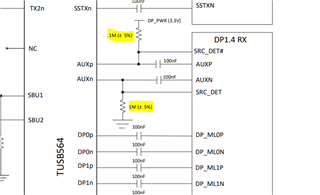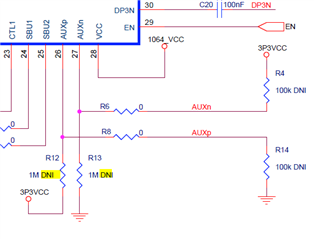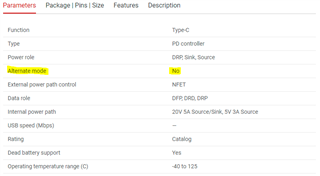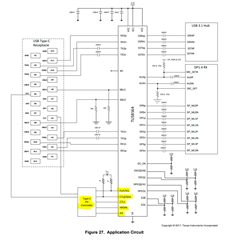Other Parts Discussed in Thread: TPS25750, TUSB321, TPS65988, TUSB422
I'm working with a custom PCB design built around the TUSB564. The USB (both 2.0 and SuperSpeed) work exactly as expected, but the DisplayPort sink is never detected by my host system (Windows). My schematic is virtually identical to the suggested design in the datasheet [link] as well as the reference design [link]. I've confirmed that HPD is going high when the DisplayPort sink is connected, but am otherwise not seeing any evidence of communication (which leads me to believe there's an error in the AUX lines). At this point, I'm at my wits end trying to figure out what else might be wrong. Any suggestions the community may have would be most appreciated. Thanks!!!
My Design: 8547.USB HUB.pdf
Note that, while this design outputs data over 30-pin and 40-pin Molex connectors, I have a Test Board that converts them into standard DisplayPort and USB-C jacks. In this incarnation, the DisplayPort goes directly to a computer monitor (via a known-good DP cable).






